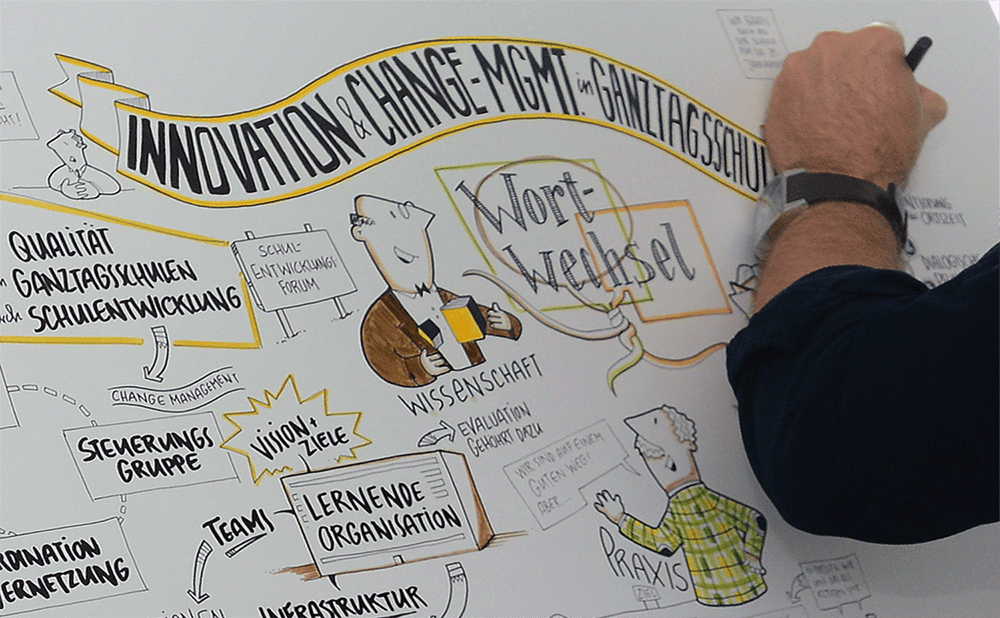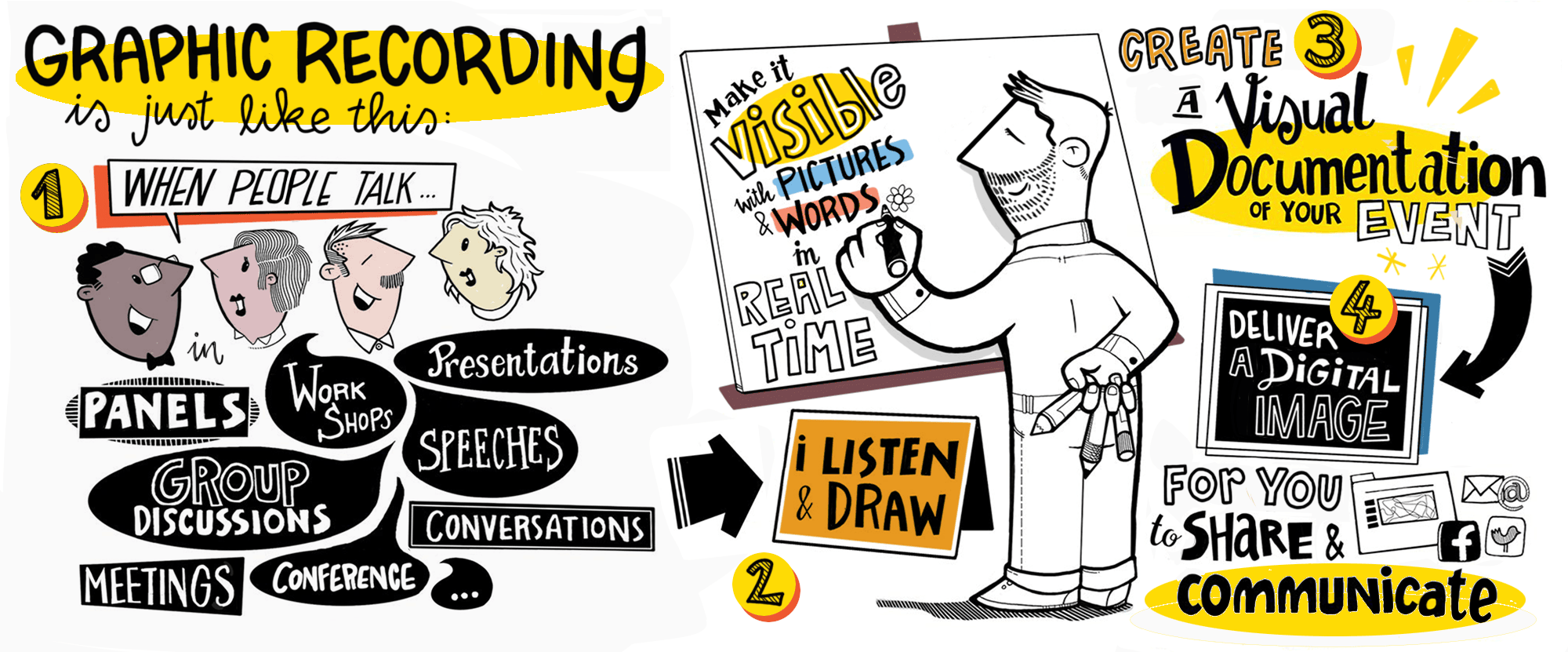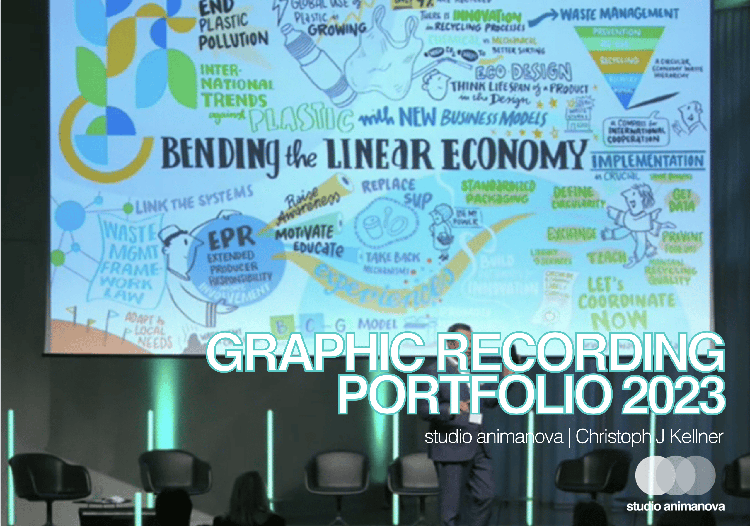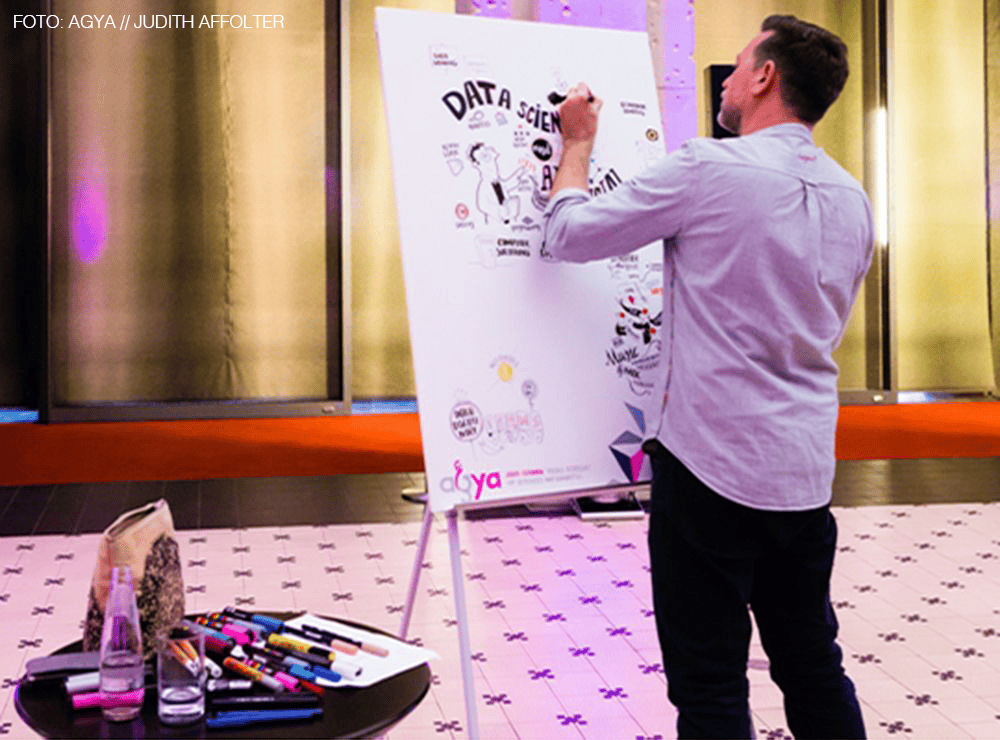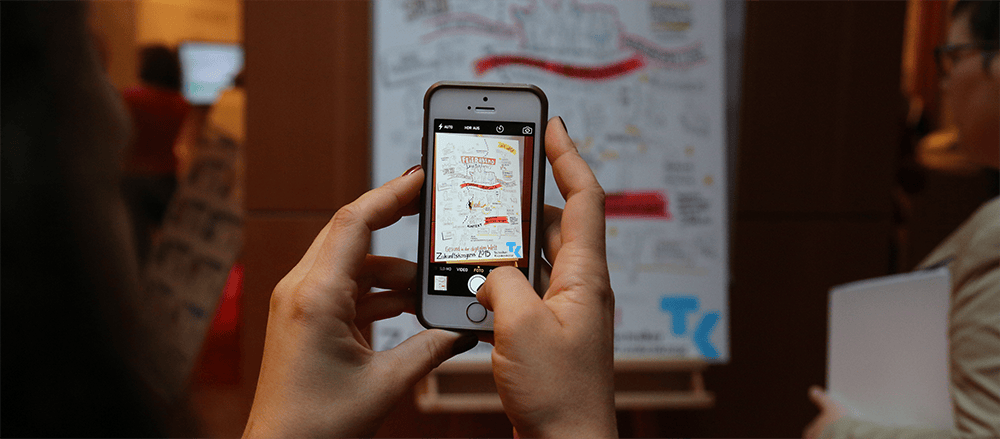Graphic Recording explained in brief
Graphic Recording is an innovative method for capturing information in real-time in a visual way. It is increasingly used in conferences, meetings, and workshops. When people are talking, discussing, presenting, or collaborating, and the ideas and results are valuable to be documented, a Graphic Recording adds value.
This is where the Graphic Recorder comes into play. By listening and live drawing, I record what is being said on the spot. I summarize the key points and make them visually engaging in a single image.
Why Graphic Recording?
Simultaneously with the event, a visual documentation is created using images and words. This combination of drawings and text ensures a fairly clear representation. In this way, not only a visual result document of the discussed topics, ideas, and messages is created, but also a unique snapshot of the event. When digitized, it can be easily shared and distributed. Graphic Recording offers real advantages.


